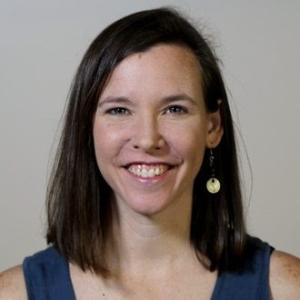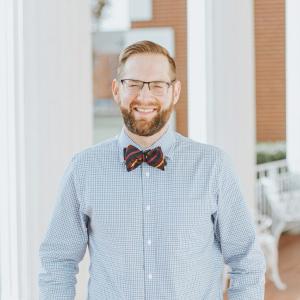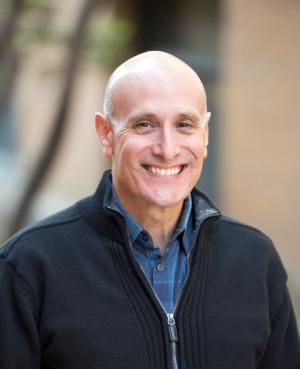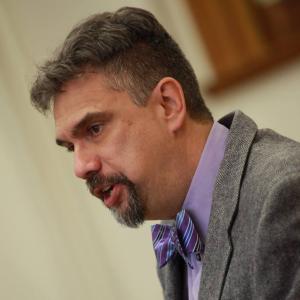Resources

I was born and grew up in the hills of east Tennessee, in the Appalachian region of the United States. As a child, I didn’t realize that where I lived had a reputation in other parts of the country. I also didn’t know that I had an exceptionally strong Southern accent until I was in college. When I decided to pursue academia, I worried that my accent would lead others to think that I did not belong in graduate school. I began to attempt to erase my accent, especially during classes or when speaking to a professor. Before giving my very first paper at a conference, I practiced over and over again to be sure that I sounded “smart” and “professional.” It was becoming clear that, to many people, “Southern” and “smart” were not synonymous. When I moved to the “north” (New Jersey) for my doctoral studies, these fears increased. I worked to prove that I was smart and capable, which meant that I attempted to hide my accent, even though it wasn’t as strong as when I was younger. Even with all of my work and practice, it occasionally slipped through and inevitably someone would comment on it. Through reading and reflection, I now realize this struggle with my accent was connected to my background and, further, my class. While many of my fellow students seemed to understand academia instinctively, I struggled to grasp it. This imposter syndrome affected me in numerous ways, especially in graduate school. Even when I had a question or a comment, I was nervous to speak. Insecurity infiltrated my body; I would wring my hands under my desk, cross and uncross my legs. When I finally found the courage to speak, my face would redden with every word. While I have worked to overcome these feelings and now can speak in academic settings, I still vividly recall my embodied experiences as a woman from Appalachia navigating academia. A number of scholars have written about class as it relates to the academy and the classroom.[1] For example, Stephanie Moynagh writes about the ways that class affects embodiment. She observes: Embodied experience varies widely, always shaped by the pervasive impacts of power structures that affect different bodies in different ways. Making sense of our somatic experience is also influenced by cultural discourse and by the limitations of cognitive processes of understanding. . . Membership in identity categories such as working-class, working-poor, poverty-class, low-income, or cash-poor is also confusing because class-based experience and identity can shift dramatically over time.[2] These observations resonate with my own experience in academia, a space that I continue to carefully navigate based on my background. My embodied experience also affects my pedagogical approach to the classroom. I remember vividly how it felt to enter a university classroom and feel out of place, confused at some of the language being used, and worried to contribute to a class discussion. I now recognize that my experiences navigating the academy help me to be a better teacher and guide for my students.[3] While my southern accent is now (mostly) hidden, I do not enter the classroom assuming that everyone understands terminology. Instead, I define words and set expectations clearly from the first day of class. As Moynagh argues, “All learning environments, both formal and informal, need to make meaningful space for nondominant ways of knowing and relating to the world.”[4] For this reason, I also offer a variety of ways that students can participate in the class. Instead of only acknowledging vocal contributions or sophisticated vocabulary, I encourage silent reflection and journaling. Similarly, offering creative assignments within the classroom is a strategy that can help to ease the tension for students who are less familiar with academic writing. I use storytelling often as a teaching strategy. Storytelling is popular in Appalachia, where we hear stories from our parents, grandparents, and even our neighbors. When possible, I take the students outside or arrange chairs in a circle as I tell a story, usually a biblical or historical one (because of the courses that I teach). I have found that students remember these stories later into the semester. In these ways, my geographical background becomes a way that I mentor and encourage students. I now acknowledge my Appalachian background when possible and attempt to dismantle harmful assumptions about geography and class. [1] bell hooks, Where We Stand: Class Matters (New York: Routledge, 2000); Matt Brim, Poor Queer Studies: Confronting Elitism in the University (Durham: Duke University Press, 2020). [2] Stephanie Moynagh, “Class and Embodment: Making Space for Complex Capacity,” in Sharing Breath: Embodied Learning and Decolonization, ed. Sheila Batacharya and Yuk-Lin Renita Wong (Edmonton: AU Press, 2018), 356. [3] For an example of the ways sharing our own experiences can positively affect student learning, see: Phil Bratta, “Relating Our Experiences: The Practice of Positionality Stories in Student-Centered Pedagogy,” College Composition and Communication, January 1, 2019, https://www.academia.edu/43453027/Relating_Our_Experiences_The_Practice_of_Positionality_Stories_in_Student_Centered_Pedagogy. [4] Moynagh, “Class and Embodment: Making Space for Complex Capacity,” 365.

My fall 2021 “God and the Human Person” students had just read M. Shawn Copeland’s excellent piece “Scripture and Ourselves: Reflections on the Bible and the Body” and were having a rich discussion on the goodness, beauty, opportunities, and limitations of the experience of being “body-persons.”[1] Every time we engage that piece, I am shocked anew when students, especially young women, report that they have never heard that God values bodies and calls us good. Despite what some Christian traditions have held, Copeland reminds us that according to Scripture, according to God, it is good to be body-persons in our particularity. In the second creation account in Genesis, we read that humans are made from, and made to work, the soil. Our embodiment is good and it is also connected to the dirt![2] During a lull in the conversation I spontaneously walked to the edge of the patio, reached over the red brick wall, and plunged my hand into the flower bed. I pulled out bright yellow and white threads binding the soil and woodchips together: “What is this beautiful structure and what is it doing here?” I asked. It was mycelium, root-like fungal threads—hyphae. Unbeknownst to most, the life and thriving of such organisms are integral in subterranean ecologies and are vital ingredients for what happens above the soil, too. Fungi play a vital role in decomposing organic matter. I replayed that object lesson during Lent this past semester. Such organisms return us to dust, too, giving us back to other creatures (Ecclesiastes 3.20). My outside classroom invited such serendipitous teaching moments again and again during the past two years. Without a ceiling sheltering us, away from the artificial light of flickering screens and in the blinding brightness of the sunshine, none of us could forget or ignore our embodiment. With no walls the breeze caressed our skin, sometimes a few raindrops threatened to send us scrambling inside. We dressed in layers or brought blankets on cool but warming days. On early fall semester days and during late spring semester days we wore hats and sunscreen or put up shade canopies. Being outside forced us to heighten our attention to the weather and changing seasons to better know our place and its natural rhythms. Even while standing and sitting on a built environment, the brick patio where my class met, being outside literally grounded us. The openness of the classroom to the sky above also signified our capacity for self-transcendence and growth in knowledge of ourselves, God, and God’s world. Our growth in knowledge of ourselves, God, and God’s world is always embodied, always grounded, of course. But the goodness of that fact, and even the goodness of our limitations, can be communicated outdoors in ways that it cannot be while inside. The week after we talked about embodiment in “God and the Human Person” we discussed interiority, consciousness, and ways of knowing. To exhibit the linkage between inner and outer, consciousness and sensation, most days I played instrumental music at the beginning of classes for prayer time. I invited students to close their eyes, to recall that we are always in God’s presence and that God is for us, and to attune themselves to their breathing, the music, and the sounds of the breeze and birds. The pivot between sensation and inner quiet served the work of attending both to our bodies and our minds.[3] Some days playing children, noisy lawnmowers, or gusty winds made the planned intellectual work of my classes difficult or even impossible. Despite my frustrations with such “distractions,” each served as a poignant reminder of the privilege of intellectual work, of its value, of its limitations, and of its relationships to “real life.” The “distractions” pressed in on us, and through them God taught me (and my students tell me they are learning this, too,) how we are not objective points, atoms bouncing around off one another, but are enmeshed in communities with other body-persons, communities including other nonhuman creatures, in worlds of meaning shaped by social and cultural assumptions and infrastructures. We always learn our capacities and limitations as body-persons in such communities, after all. My next and final reflection on learning and teaching without walls will explore how being outside helped us to recognize and attend to such communities. [1] M. Shawn Copeland, “Scripture and Ourselves: Reflections on the Bible and the Body.” America: The Jesuit Review (September 21, 2015). [2] On how we are “soil-birthed and soil-bound,” see Norman Wirzba, This Sacred Life: Humanity’s Place in a Wounded World (New York, NY: Cambridge University Press, 2021), 65-67. [3] The first few times that I utilized music for prayer time, though, we dove straight into difficult discussion. I quickly discerned that the transition was too abrupt, akin to emotional or intellectual whiplash! I devised a buffer time of standing and stretching following the music/prayer time and preceding discussion.

The first time I did this in class, my students looked at me like I was crazy. I wanted to try something new. The traditional rigid “academic dialogue” model was no longer sufficient to inspire courage and honesty about topics that were dividing the world right in front of my eyes. They expected me to throw some discussion questions on the PowerPoint, break up into small groups for discussion, and then have them report out into a larger class discussion. I use this method of discussion often. Today, I invited them into an embodied dialogue. I smile warmly and offer instructions for our dialogue together. “I’m going to say a statement. If you agree with it, stand on the right side of the room. If you disagree with it, stand on the left side of the room. And if you are unsure, don’t know yet, or want to say, ‘It depends,’ you stand in the middle.” Embodied Dialogue is Generative The vitality in the room changes as students anticipate the first statement. Statement 1: “It is possible for a Christian to be racist.” The energy in the room is palpable as students physically take their stance. The movement creates a sense of generativity as students anticipate where their peers will stand. I wait for the movement to cease, for students to be in place. “Ok, is everybody in place?” I ask. I read their faces. Most students stand eager to engage. Others look about pensively, still trying to figure out if they want to move from one side to the other or to the middle. The statements fluctuate between levels of intensity. We move from less intense statements like “Education is the key to success in life,” to more intense statements like “Metal detectors keep schools safe,” and “Students should be suspended from school and arrested for violent behavior.” Then we move to even more intense statements like “God is at work in the government,” and “Protest is essential in America in order for justice to take place.” Embodied Dialogue Prompts New Awareness The “take a stance” activity invites students to exercise agency during the entire process of dialogue. Each participant actually gets to choose where he or she stands, even if that stance is “I don’t know.” Perhaps the recognition that everyone is invited into a certain level of risk helps level the dialogical playing field. Choosing our stance is nothing new. We are always choosing where to stand. This activity makes student aware of that. When they are standing in place students suddenly become aware of their body. Not just their body, but the bodies of others. Many are surprised to see which side of the room their peers decide to stand. “Why are you taking this stance?” I ask students. “Please tell us why you are standing where you are.” The invitation to respond to the “why” question is one of the most effective ways to invoke critical thinking. Students hear from those who stand with them, discovering that even those who say “I agree” may choose this stance for reasons different than their own. Many even surprise themselves with their own inability to say why they have taken their particular stance. The embodied awareness of their stance invites them into further exploration, into further participation. In a developmental stage where undergraduate students are still making sense of who they are, what they believe, and why they believe what they believe, it seems unfair to force them to choose one position or the other. And yet, this pressure to choose one way dominates Western understandings of adulting. To be a mature adult, we must know the “why.” We must know the right answer. The either/or dichotomy sometimes traps students. Captive to the desire to please those they admire, or to feign intellectualism, students rush to an answer. When students rush to an answer, they rush past another’s perspective in a hurry to arrive at their own. Our dialogue is no longer participatory. Mutuality is exchanged for “right” or “wrong.” We don’t internalize what others say in order to examine our own thinking; rather, our way of understanding becomes the rubric by which we judge all else. We judge, assess, and evaluate what others say against what we already think. Embodied Dialogue Illuminates the In-Between What I have found essential for this assignment is the in-between space. I tell students that at any point during this activity they can move from “I agree” to “I disagree” or from “I disagree” to “I don’t know.” It never ceases to amaze me how often students move in between these spaces. They exercise the muscle that enables critical thinking in real time. They demonstrate with their bodies that our opinions and perspectives can change and can also be changed in dialogue with others. How many times do we only provide two options for students? Yes or no! Democratic or Republican. Liberal or Conservative. Providing the either/or inadvertently communicates that there is only one right answer, and we are required to know it. We must choose a side, the right side. Our thoughts have to be settled. The incessant need to box people’s thoughts into categories does not leave room for everything else that comes between right and wrong, yes and no. It leaves no room for the nuances that exist in the liminal space of not yet, not sure, uncertain. It hides the continuum that always exists when it comes to peoples’ thought lives and rationales. What has fascinated me the most in this activity is how students create their own continuum. The three clear positions I offer somehow get stretched out during the game. Students who are not quite in the “I agree” category may lean there but may stand in the middle between “I agree” and “I don’t know.” They make the invisible visible through their bodies, helping us to see that even three clear positions cannot capture the complexity of some topics. The invitation to the in-between space is an invitation to sit in the “I don’t know.” To acknowledge that we exist in a world of unknowns and uncertainties more often than not. Yet in our rush toward certitude, we sometimes miss the process that gets us from “I dont know” to “I know,” “I feel certain,” and to “I agree” or “I disagree.” What if our desire for questions and answers was really an attempt to simplify hard, unanswerable questions? What if a more faithful way to seek understanding is through “questioning and wrestling?” [1] What if we refused to settle into the comfort and assurance of our “I knows”? What if we were required to embrace our “I thinks” and allow ourselves to be formed in and through our wrestling with God? These are the questions that emerge for me as an educator when I facilitate this activity. Embodied Dialogue is Participatory Participation is inherent in the word “dialogue;” thus, participatory dialogue should be a given. But it’s not. Not all dialogue is participatory. Too many students get lost in large group classroom discussion, are never really challenged to reflect critically. The one or two students who have something to say speak. Those who are more reserved remain silent, keeping their thoughts to themselves. It is possible to be invisible even in dialogue. Embodied dialogue makes it difficult for students to hide. This activity invites even the quietest students to be actively engaged in the dialogue. Academic dialogue may also be one-sided, where students tend to talk at, about, and over other students. Embodied dialogue is about talking with others. It invites not just participation but mutuality. To invite others to engage with our thought life even as we engage with theirs. Additionally, it models visually that our deepest beliefs often put us in proximity or out of proximity to certain people, especially when the conversation centers around diversity, equity, and inclusion. Hot-button topics remain easy to avoid in the classroom. This activity has become a regular part of my pedagogical toolbox, especially when engaging topics that are intense. After saying a statement, I hear students respond, “Woah, that’s tough.” In other words, the “hot” doesn’t disappear from the topic when using this approach. Students still exhibit passion and conviction. At the same time, students are less cautious with sharing. Something about the approach itself is disarming. This approach to dialogue offers the learning community space to reflect on controversial topics in a generative way. Dialogue was never intended to be passive. Rather, dialogue is an active, dynamic process where students are invited to explore, discover, and come to know themselves, others, and the world differently. [1] Carol Lakey Hess, “Echo’s Lament: Teaching, Mentoring and the Danger of Narcissistic Pedagogy,” Teaching Theology and Religion 6, no. 3 (2003): 135.

At Nashotah House Theological Seminary, a crucial element of our participation in the seminary’s Anglo-Catholic tradition is the student body and faculty’s regular presence at morning prayer, mass, and sung even-song. In the seminary’s beautiful chapel, surrounded by stained glass and hand-carved wooden statues, we sit in the antique wooden choir stalls lining the chancel and join together in worship. As a junior faculty member, I quickly learned a Nashotah House tradition: your choir stall is not yours to determine. The seats are assigned based on seniority, and priority is zealously guarded. Where you sit matters. This tradition of established place carries its own ethical challenges and requires its own ethical interrogation. What assumptions regarding hierarchy and privilege in our tradition and amongst our student body and faculty does it underwrite? To provide one example, our tradition has come into conflict with our commitment to ensuring that students with mobility challenges have equal opportunity to participate in worship, requiring questioning and ultimately changes to our tradition. Teaching social justice in a tradition requires inviting students to engage in a similar (although broader) excavation of that tradition. Of course, a crucial part of this teaching involves learning alongside my students how to step outside the tradition to critically confront the moral and ethical failure of Anglicans, such as the use of Anglican theology at times to support slavery and colonialism. This critical engagement requires accepting that our seats often are gained at the expense of others, and may require change and even surrender on our parts. These moral failures have been well documented and extensively explored, so excavating the resources for critique has been fairly straightforward. An unexpected joy of this type of excavation, however, has been how many good and constructive resources for social justice remain to be uncovered in the tradition. The Oxford Movement which launched Anglo-Catholicism accompanied liturgical revision with a serious theologically-grounded commitment to working for social justice, spanning generations of the movement and manifested in many different forms. Excavating these resources provides the opportunity to invite students into a different form of engagement with the tradition. Students have become imaginatively engaged in questioning their own social assumptions and career aspirations by reading about the so-called “slum priests,” for example, whose commitment to “ritualism” was equaled by their commitment to working to challenge the economic, social, and political structures which created and justified the appalling living conditions suffered by the poor of British manufacturing cities. Students have learned how to connect social critique and advocacy for justice to Anglican theology through reading the works of the great reforming Archbishop of Canterbury, William Temple. Of course, exposure to works of Anglicans such as Pauli Murray and Bishop Desmond Tutu have expanded their conceptions of Anglicanism’s work for social justice beyond Anglo-Catholicism and the British Isles. One of the most fruitful resources I have found for retrieval within the tradition are the editions of the British Critic—the journal edited by John Henry Newman in the early days of the Tractarian controversies. Along with discussion of history, doctrine, and liturgy, the pages of this Christian socialist leaning journal are filled with essays of social critique and challenge. One of the essays, written in 1842, which has engaged and challenged my students the most is a long theological critique of the practice then common in British parishes of renting pews to the social elite. The author describes how the poor, walking in and seeing the great boxed pews lined along the front of the parish church, are confronted with an image of the priority of wealth and privilege which runs exactly opposite to Jesus’s message of the priority of the poor in the gospel. Rather than encountering “the image and pattern of heaven” in the church, they see “the world, the flesh, and the devil apparently in full possession.” As part of the Anglo-Catholic liturgical revival, the author calls for the removal of these pews and the restoration of the parish to the poor and needy whom Christ intends to possess it. Through this image, students begin to encounter the connection between the Anglo-Catholic tradition of beautiful worship and architecture with the beauty of justice and service. Over my time at Nashotah, I have realized that our tradition of choir stall seating incorporates not only seniority, but also service. At every service, one of the sacristans (the student-leaders with the most authority in worship) always forgoes sitting in choir to sit by the back door of the chapel—he or she is placed there by the tradition to greet, care for, and assist any guests who might join in the service. My hope for my students is that they leave our seminary having learned that Anglo Catholicism not only provides choir stalls, but also provides models and methods to emulate, just like the sacristans sitting at the back of the church ready to serve and care for others. Where you sit matters.

I teach a course on the ethics of world religions which takes a narrative approach. Rather than just focusing on the text and tenets of religions in relationship to ethics, the course also highlights the life stories of “exemplars” from various religious perspectives. These have included civil rights activist Malcolm X, Buddhist monk Thich Nhat Hanh, and Liberian Nobel Prize winner Leymah Gbowee. The advantage of using this approach is that it gives flesh to sometimes abstract principles, demonstrating that all ethics are situational and depend on one’s positionality. These are complete human beings, so they show both human potentiality and human frailty. One particularly thorny exemplar we focus on in the course is Mohandas Gandhi. Students study his life, from his early years to his education in Britain, work in South Africa, and finally his years of leading the movement for Indian independence. They also read selections from his writing, delving into his views on ahimsa or non-killing, satyagraha or “truth force,” the caste system, and his tactics of nonviolent noncooperation. Gandhi’s negative views of Black South Africans when he lived there are an issue in his history that cannot be ignored. Invariably the question arises, was Gandhi a racist? Throughout the course, I emphasize the value of dialogue over debate when discussing religious perspectives; I wanted to create a forum where students could engage this question in a way that developed their ability to give careful attention to others’ perspectives—a space where dialogue around these differences could lead to greater understanding. The process I use to accomplish this learning strategy begins with dividing the students into pairs and providing them with two short newspaper articles on the subject. While these are not opinion pieces, each article has a particular bias—one towards naming Gandhi as a racist and the other towards seeing him as evolving on issues of race over his lifetime. Each student in the pair is asked to read one of these articles, and to identify the “slant” of the author and the particular points that support the author’s perspective. Each student in the pair then presents this view to their partner as if the view was their own. In other words, one student presents the view that Gandhi had racist views and should be held accountable for them while the other student argues that his views on race evolved and he remains of role-model for social change. We then move to a large group discussion where I pose the following questions to the class: How did you feel about the position to which you were assigned? How did it impact your reading of the articles? Did any point made by your partner make you think differently about the topic? Every time I lead this activity, students are able to name various points made by their partners that provide fresh insights into the controversy. Finally, I create a continuum in the classroom, with one end being “Gandhi was racist” and the other end being “Gandhi is a role-model.” I invite students to stand up and place themselves somewhere on the continuum and share the reason they have placed themselves at that point. I use the continuum because it permits students to nuance their opinion, to move away from binary, either/or thinking on the issue. This past fall, the activity took on added significance given that our campus is only a few miles from the site of George Floyd’s murder at the hands of Minneapolis police. Since the student population of Augsburg University is nearly 60 percent BIPOC, questions of race and racial justice are not merely academic ones. This activity provided students with a space to explore the mixed history of religions on racial oppression in a manner that neither excuses that history nor uses it to dismiss the positive impact of religions on social justice movements. In the final analysis, students may not change their views about Gandhi’s legacy around race, but their views often become more nuanced and they increase their ability to recognize complexity and ambiguity around these issues. The ability to embrace complexity, ambiguity, and the humanity of all is important for understanding religions as well as for our current fraught and polarized political environment. Photo by Claude Piché on Unsplash

[embedyt] https://www.youtube.com/watch?v=SuHStsvmaG8[/embedyt]

As the fall semester draws to a close, I reflect on how our classrooms continue to absorb the dense impact of exhaustion, grief, and so many unknowns. The isolation and physical distancing brought by COVID-19 during the first months of 2020 have remained a reality for much longer than any of us could have anticipated. We have hardly been able to metabolize our grief, frustration, fatigue, and the toll the lack of contact and sensation has had on our bodies. Along with COVID-19, we have continued to somatize the woundedness of profound inequalities in our communities, as I have written elsewhere. From election cycles in the Américas, to ongoing anti-Black racism and violence, white supremacy, settler/extractive colonialism, racial capitalism, and cishet patriarchy, we continue to survive systems of exploitation, dominance, and oppressions of all tenors. In light of this historical moment, my colleague at the Pacific School of Religion, Dr. Aizaiah Yong, and I chose to codesign a syllabus that engaged formation through the lens of spirituality and leadership, in an attempt to deepen our lives individually and collectively. It intentionally centered the work of Black, Indigenous, and other scholars of color. We created a compendium aimed at sustaining our vitality, rootedness, and creativity during this period of remote learning where we surveyed practices and scholarship from varied religious traditions, geopolitical contexts, and artistic modalities. Throughout the last four months, our virtual classroom became a collaborative learning environment where coconspirators “identif[ied] and valorize[d] that which often does not even appear as knowledge in the light of the dominant epistemologies,” as de Sousa Santos puts it.[1] By privileging experiential epistemologies, we attempted to interrupt the dominant politics of knowledge and made every effort to enflesh sensorial experiences, understanding that they are fundamental in the shaping of knowledge and students’ formation. Corporeal ways of knowing presuppose contact, sensation, concrete, emergent, and living bodies, in all their capacity for suffering and healing, copresence and distance, for knowing-with rather than knowing-about. The semester’s various activities ranged widely: we created centering and closing moments where we could collectively breathe, built sacred spaces, performed an archeology of our joys, recollected our ancestral connections, our ecostories, ecomemories, understood land as formation, as pedagogy, thought about emergent strategies for transformation, engaged with how we metabolize anger, and how to develop a keener experience of tenderness.[2] Students were invited to imaginatively cocreate workshops, artworks, reflections, engage one another via a “spiritual formation virtual café” suggested by one student, raise difficult questions via online forums, and come up with field guides for spiritual formation with spiritual practices, reflections, centering moments, devotionals, rituals, meditations, art-making, embodied work, and much more. And yet all of these strategies seemed somewhat insufficient in our attempt to foster bonds of copresence, sensation, and contact that body-with-body classrooms offer. How could we respond to the urgencies, the sense of isolation, fragmentation, and the intensities of the present moment through remote learning? How could we open up the nexus of space-place-time to embodiment? How could we be responsive to Lama Rod Owens’ call to embodiment as a returning home to our bodies, in this moment and context, opening up some kind of spaciousness that could allow us to respond to both the woundedness and the joys of the now?[3] How could we cultivate embodiment in a virtual setting with a deep understanding “that disembodiment is the primary strategy through which oppression is maintained,” because we become desensitized to the conditions around us, to our emotions, to our sense of vitality, to that which deeply moves us and puts us back in touch with ourselves, our joys, pleasures, hopes, and dreams?[4] How would we subvert the logic of isolation and “presentify” zoom rooms so that a confluence of encounters, contact, and embodied sensation could transpire? How could we create a classroom experience based on a poetics of presence and intimacy as the artist Elisa Arruda invites us to create? By turning to creative practices and the arts, we were able to weave, potentialize, and ignite a process of contact and sensation. Each week, students received what we called Spiritual Formation Care Packages (SFCP), which were designed based on the readings for that week. They became a series of centering and creative exercises that invited us to meditate, embody, and create for about one full hour per week. The intention of these exercises was to provide support and an opportunity for creative embodiment, integrating what students learned in class with their own lived experiences, creative processes, spiritual traditions, and research. The SFCP ritualized and generated containers allowing students to tap into the power of their spiritualities and creative vigor. Inspired by my own art practices and the work of Gloria Anzaldúa, the packages afforded us an opportunity to sense how our skin, viscera, and psychosomatic bodies carry knowledge that—in moments of pain, dis-ease, conflict, and unknowingness—yield us the capacity to see, touch, and create in expansive and incendiary ways. Art, as Anzaldúa puts it, is the “locus of resistance, of rupture, implosion, explosion, and of putting together the fragments.”[5] It allows us to become anchored in our bodies, to “shock ourselves into new ways of perceiving the world,” to “feel our way without blinders,” to “touch more people,” to evoke the personal and social realities through blood, pus, and sweat. Our creative practices afford us the opportunity to access, re-member, and revive “what most links us with life.”[6] Art practices, as shown in the work of Elisa Arruda, embolden us to reclaim our processes of formation, fully embodying our shadows and desires for presence, joy, pleasure, restoration, expansion, contraction, proximity, sensation, and connection. [su_image_carousel source="media: 244745,244746,244747,244748,244749,244750,244751,244752,244753" limit="100" slides_style="photo" crop="none" align="left" max_width="2000" captions="yes"] About the Artist: Elisa Arruda is a visual artist who was born and raised in Belem do Pará, in the Amazonian region of Brazil. Currently living in São Paulo, Arruda investigates the poetics of intimacy, moving quite freely through several mediums. She pays particular attention to the realms of the domestic and the public as well as the tensions sheltered in dynamics of strength + fragility, endings + beginnings, intimacy + alienation, loss + growth, proximity + confinement. Notes [1] Boaventura de Sousa Santos, The End of Cognitive Empire: The Coming of Age of Epistemologies of the South (Durham, NC: Duke University Press, 2018), 2. [2] For more on this, please refer to Eros and Ideologies by Laura E. Pérez, Voices from the Ancestors edited by Lara Medina and Martha Gonzales, Land as Pedagogy by Leanne Betasamosake Simpson, Ecowomanism by Melanie L. Harris, The Way of Tenderness by Zenju Earthlyn Manuel, and Love and Rage by Lama Rod Owen. [3] Lama Rod Owens, Love and Rage: The Path of Liberation Through Anger (Berkeley, CA: North Atlantic Books, 2020), 119-120. [4] Rod Owens, Love and Rage, 121. [5] Gloria Anzaldúa, The Gloria Anzaldúa Reader, AnaLouise Keating, ed. (Durham: Duke University Press, 2009), 177. [6] Anzaldúa, “Speaking in Tongues: A Writer to Third World Women Writers,” 34.

My teaching goals reflect my expectations that my students will change the world. I want my students to have profound consciousness of love, of themselves as capable beings, of the beauty of creation. I want to instill in them with the necessity to fight for the oppressed, uplift the downtrodden, and conspire with the voiceless for a place in the societal decision-making. I want them to be cunning enough to avoid the shallow passions of those who would exploit their talents, squander doing good, and misuse their power. I want them to be wise. With these ideals in mind, I design into every syllabus the notion of the body. There are few things more sacred and more political than the human body. Intentionally engaging the body to learn, while simultaneously making the politics of the body part of the course conversation, is a critical way to get to my lofty teaming aims and kindle my student’s passions. Wisdom depends on the body. A metric I use to assess in-class learning activities is the degree to which I have engaged all the senses of the body in a semester. If, by the end of the semester, I have not engaged all the senses multiple times and in multiple ways, I deem my cache of learning activities for that course as weak. When I engage all the senses multiple times throughout the semester, I notice students’ depth of understanding is higher. I carefully design activities for seeing, smelling, touching, hearing, and feeling, not because of student’s varied learning styles, but because a multisensory encounter is more interesting and is more satisfying to the curiosity. Giving adults permission and opportunity to learn with their bodies is an act of resistance against the current body politics which would deem the body only as a commodity. And it’s more fun than just sitting still. I am well versed in shaping courses that point to and analyze the ugliness of the hegemonic politics. A notion which oftentimes intrigues my students while studying the politics of the body in the USA is the ways our bodies are used as indicators of inferiority and superiority. It is thought that to gaze upon a body, one can determine who is male, white, straight, and wealthy. Continuing, it is also thought that to gaze upon a body one can determine who is female, not white, not straight, disabled, and poor. This delusion is perpetuated by the bad science portrayed on some TV shows. There is an episode of CSI where the coroner, while investigating a crime scene, uses a caliper to measure the width of the nose of a charred body and informs the detectives that the deceased victim was African American. Disputing this kind of ignorance about the body and race/gender/class/sexual identity politics is the stuff of marvelous classroom discussions. This semester I wanted to shape a course and a conversation that was a teaching of love, self-worth, dignity, acceptance, and belonging for the personal body, for bodies of knowledge, and communities as bodies of persons. The course is entitled “Reading Deeply.” I selected one book for us to read for an entire semester. The book we are ruminating over is Remnants: A Memoir of Spirit, Activism, and Mothering by Rosemarie Freeney Harding with Rachel Elizabeth Harding. It is a multi-genre memoir that vividly demonstrates an integrated life of deep spirituality and activism. I want my students to be exposed to the wisdom of this text in hopes that they will emulate this wisdom. A thematic thread in the memoir is of healing, wellness, and care for the body. Pressing students to deeper engage body/identity politics, the first assignment is to create a wellness plan and fulfill that plan throughout the semester. Students reported-in about their plan last week. While each woman was making her report (all the students are women), the other students listened with remarkable tenderness. There was an air of respect and regard as each woman told us of the focus of her plan, the rationale for the focus, and the activities she would pursue over the semester for healing, fitness, balance, and rest. The projects were about living into their best selves by disrupting the patterns of ignoring, abusing, or neglecting their bodies. The plans included stopping some habits and starting new habits. In all cases the women were excited about being given course space to consider her own body and contemplate the question, “do you want to be well?” Asking students to live-into the principals of our reading rather than just “think about” the reading is their preference for learning. Their reporting felt reverent. At the end of the semester, they will report-in again telling the story of attempts at self-care and healing. The political is always personal. In studying the harm, violence, and inhumanity of identity politics it feels right, needed, even provocative, to teach students to value their own bodies, to respect the enfleshed. The power of love to create a more humane world undoubtedly includes care of self, nurture of body – a tending to the soul. In the memoir (pp 39-40), Rosemarie recounts the words of her mother after recovering from a near-death experience: “…. Listen, Rose. When you die, there is nothing, nothing there but love. Everything else is gone.” “Hmm.” I listened. “Nothing but love,” she said again. “So while we’re in this world, we have to do whatever we can to love people, to love this world, to take care of all that’s in this world. Because that’s all that matters, the love.” I closed my eyes briefly. The impact of my mother’s words made me sway ever so slightly where I sat. “Hmm.” She was ready to get into bed. She was pulling the covers over her shoulders when she said it to me again, “Now don’t forget, Rose. There’s nothing left but love. That’s the most important thing. That’s what you need to know.”